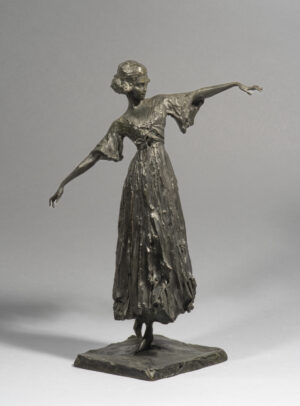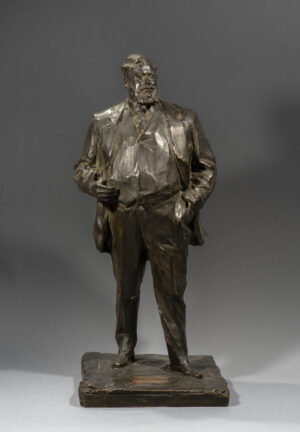PRINCE PAUL TROUBETZKOY
(1866-1938)
Coming from one of the most renowned princely dynasties of ancient Russia, (though born in Italy to an American mother), Troubetzkoy (his real name being Highness Prince Pavel Petrovitc Troubetskoy) was related to eminent familiesof the imperial aristocracy.
His parents used to entertain the representatives of the scapigliatura (Grandi, Ranzoni, Cremona) in their Lake Maggiore’s residence. In Milan, he became Ernest Bazzaro’s pupil, encountered Segantini, and joined the FamigliaArtistica (1886). However it is Paris that brought him success. Awarded a Mention Honorable in 1889, he received the Grand Prix de la Sculpture at the 1900 Exposition Universelle (in the Russian section) and from there on, achieved a worldwide fame. On this occasion, the French State acquired his Tolstoï on horseback for the Musée du Luxembourg. Settled in a quiet area of the 16th arrondissement of Paris, Troubetztkoy became the great sculptor of modern life, seeing elegant upper-class women, intellectual and political personalities, and above all his fellow sculptor, Auguste Rodin, whose full-length portrait he made (in bronze, around 1906) Three different portraits of Count Robert de Montesquiou, of a virtuosity comparable to that of the superb painting by Giovanni Boldini ten years earlier, caused a sensation in 1907. The following year, an exhibition of fifty of his artworks at the Galerie Hébrard brought him sweeping success. His equestrian statue of Alexander-III, which had finally been erected in 1909 at Znamenskaia Square, in Saint Petersburg, won him unbounded triumph, and at the same time marked the pinnacle of his work in Russia. His clients were French as well as Argentinean, Spanish, Greek, American, Egyptian, Chilean, among whom Sir William Eden and his family, the painters Zorn and Joaquim Sorolla, the Vanderbilt-Rutherford family, Prince Dobro, Roland Garros and many others. In 1911, he left Paris for New York, where he spent the war years before returning to Paris in 1921. He moved his workshop to Neuilly, and haloed by his American stay, he found again his prestigious clients: Georges Clémenceau, the industrial Bugatti, and his family had become familiar faces. As Troubetskoy declared to C. Bormeyer: “All of life interests me (…) I do not want my paintings and statuettes to represent an ‘idea’ like that of the symbolists. I do not wish to tell a story as in the anecdotal realist painting… what I am endeavouring is to convey effectively, as much as I can, the impressions I receive from nature” (Fine Arts, 1911, p. 6 to 7, quoted by G. Piantoni, 1990, p.17). His sculpture is thus qualified as impressionistic. Italian by birth, Italian at heart, he returned to Italy in 1932 to the place of his golden childhood on the banks of Lake Maggiore. It was in this dreamlike landscape that he died in 1938, at the age of seventy-two.


